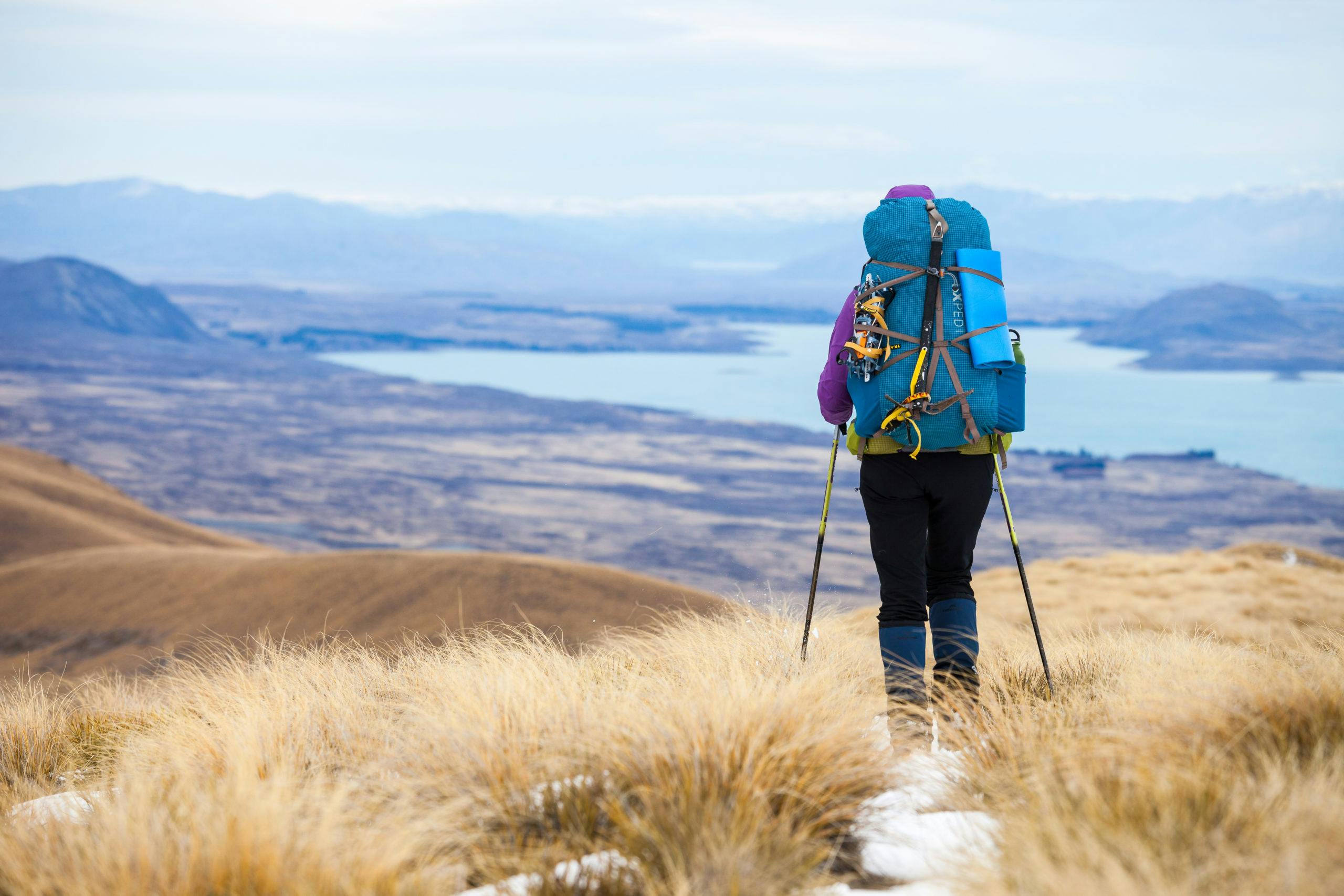It’s easy to put your gear away and forget about it until it's next needed. But tramping in winter is a more serious proposition than in summer and it pays to check your gear well before leaving home.
Discovering a problem with your crampons when you’re high up on shady snow slopes late in the afternoon is a good way to sabotage a winter weekend trip. It’s easy to overlook gear maintenance when some of it is only used seasonally, so here are a few items to think about before you venture into those short, cold but beautiful days of winter.
Boots
Apply a conditioner if the leather is showing any signs of dryness or cracks. Replace laces if necessary and make sure the soles are still well bonded and have a reasonable edge for grip on snow and frozen ground.
Crampons
Fitting crampons to your boots before you go is best practise, as you’ll be able to confirm they’re set at the correct length and don’t have missing or broken parts. Crampon points dull over time, so a tune with a file might be required.
Ice axe
Sharpen the pick if required. If you use a leash, make sure it’s still securely attached and not badly worn or faded.
Helmet
Modern climbing helmets made from foam should be checked for cracks or severe dents. Check the buckle and that the head cradle adjustment still works.
Eyewear
Snow blindness is no fun. Sunglasses that provide sufficient sun protection are important and goggles can be essential in high winds and spindrift.
Gloves
Two pairs are ideal: a thinner fleece or baselayer glove and a ski-style waterproof glove or mitt for full warmth. It’s good to upsize the warmer glove slightly so they’re easy to put on over damp hands or your baselayer glove.
Insulated jacket
If you haven’t worn your downie for a while, make sure the zip still works. Like sleeping bags, down jackets benefit hugely from an occasional wash, which helps maintain loft and warmth. Jackets with a hood are best for winter – keeping your head warm and the wind off your neck.
Waterproofs
When did you last wash and apply a DWR to your waterproofs? Pre-winter is a good time for a refresh to get maximum performance. You might need to put your overpants on over crampons, or big boots, so pants with a full-length zip are best.
Gaiters
Snow gaiters (upper calf length) are ideal for winter use. They keep your lower legs warm, snow out of your boots and prevent crampons catching on clothing. Make sure the retainer that fits under the arch is not too worn, or attach one if you need to.
Windproof
With the colder wind of winter, a windproof jacket that can be worn over a base- or mid-layer is a key item for comfort. Either a really light and breathable windbreaker or a slightly heavier softshell jacket can be more comfortable than donning your rain shell when it’s breezy.
Poles
Length-adjustable poles can seize if they were put away damp, so make sure they still extend and lock securely. If necessary, clean and lubricate the sections with a cloth and a little WD-40. Attaching snow baskets instead of the smaller hiking-style ones can make life easier. Make sure the leash is adjustable, as it’ll need to fit over bulky gloves and cuffs.
Sunscreen and lip balm
New Zealand’s UV is savage enough without inviting sunburn on winter slopes. Get a high SPF sunblock and apply it liberally (the container that’s been in the bathroom since last winter might have expired). Lip balm with sun protection is essential. Keep it in your pocket and remember to apply it often.
First Aid
First aid kits usually become depleted over time, so make sure the essentials are still in there. Include pain killers (paracetamol and ibuprofen at a minimum), a stretchy bandage, large wound dressings and plasters, and tape that can be used on blisters.
Repairs
Carry a couple of cable ties (great for fixing broken buckles) and a spare shoelace or length of cord. Duct tape wrapped around a water bottle or walking pole is useful for patching tears.
Headlamp
Make sure your torch still works and carry enough spare batteries for typical use as well as to get you through a few hours of walking in darkness should you underestimate times or have a problem on the trip.
Locator beacon
Has your beacon passed its expiry date? Check it. If you’re relying on a device with rechargeable batteries, make sure it is fully charged and your subscription is still current.
Dry bags
Aside from the obvious, drybags are a good way to organise gear and stop it from blowing or sliding away. Unlike plastic bags, you can clip them to your pack while you sort yourself out.








